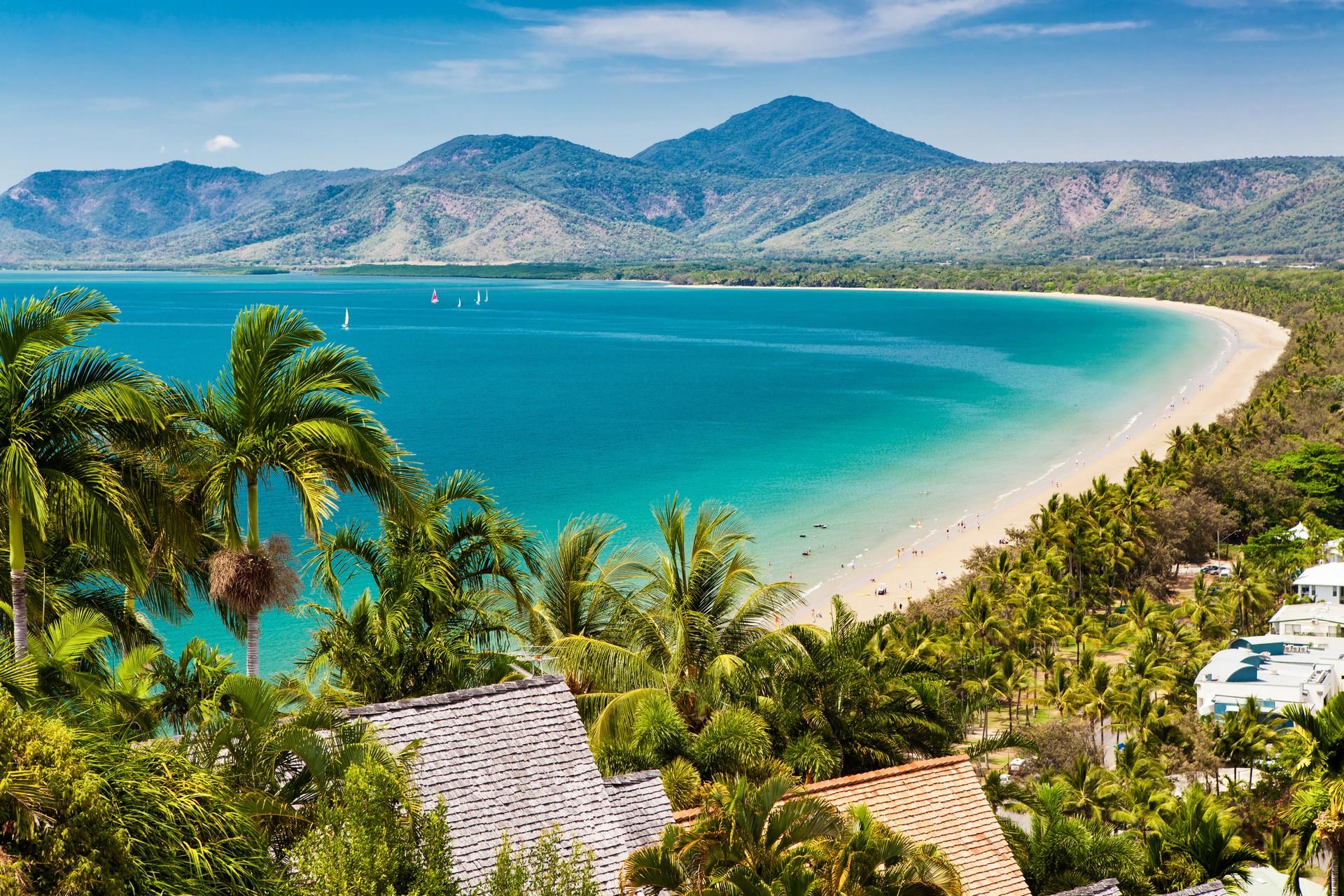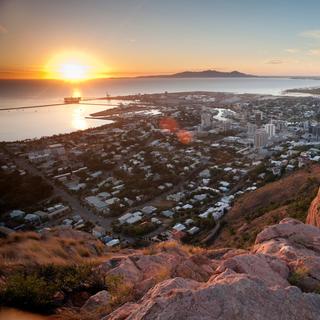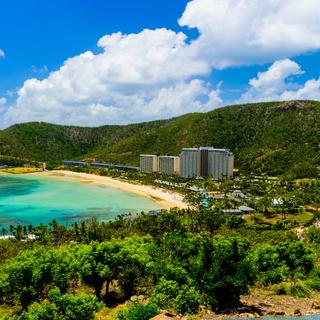
Port Douglas weather and climate

Port Douglas weather and climate
Day
27 °C
Night
18 °C
Sea
24 °C
Precipitation
23 mm
in month
Rainy days
7 days
in month
Daylight
11 hours
average
Sunshine
8 hours
average
Humidity
62 %
Weather charts for Port Douglas
Destinations nearby and activities
Destinations nearby
Activities in Port Douglas

Find more destinations like this
Destinations with similar weather to Port Douglas
Other destinations in Queensland - Northeast coast - Australia
Closest cities for Port Douglas
Weather overview for Port Douglas
Weather overview
Nestled in the warmth of tropical Australia, Port Douglas's climate features higher daytime temperatures ranging from an agreeable 26 °C (79 °F) in the cool months to a balmy 32 °C (89 °F) during the peak of summer. The warmest sea temperatures peak in February at 29 °C (84 °F), while the crisp 23 °C (74 °F) in July invites for a refreshing swim. The lowest measures of precipitation fall in the month of September with barely 6 of rain, whereas February brings the most rainfall with 22. When the sun sets, you can expect the highest night temperatures in January, reaching 24 °C (75 °F), and for the cooler evening breezes, July offers the lowest at 17 °C (63 °F).
January weather
The dawn of the wet season in Port Douglas sees a gentle decline in daytime temperatures to 31 °C (88 °F), while night temperatures reach a notable high of 24 °C (75 °F). There's an increase in the frequency of rainy days, totalling 21, and a subsequent rise in rainfall, accumulating to 318 mm (12.52 in). The decrease in cloudless sunshine hours is observed, dropping to 7 hours.
February weather
February's waters in Port Douglas are at their warmest, hitting a high of 29 °C (84 °F). The wet season is in full swing this month. Rainfall peaks as well, with 22 of rain, and we observe the highest recorded precipitation at 350 mm (13.78 in). Humidity surges to a maximum of 73 %, and the minimal sunshine hours reach as low as 6 hours.
March weather
Beginning in March, the sea temperature in Port Douglas starts a mild descent to 28 °C (83 °F), and the night temperature also starts to cool slightly, reaching 23 °C (73 °F). The number of rainy days begins to decrease too, noted at 20, while precipitation starts to reduce to 265 mm (10.45 in).
April weather
April marks the advent of the tourist season in Port Douglas with a noticeable downturn in daytime temperatures, stabilising at 30 °C (85 °F). Concurrently, the sea temperature declines to 27 °C (81 °F). The wet season is still present, with rain days tapering off to 18. Nighttime temperatures continue their pattern of decline, notching up to 22 °C (71 °F).
May weather
Come May, the peak tourist season is imminent in Port Douglas, with the sea temperature further cooling to 26 °C (78 °F) and a continual drop in daytime temperatures reaching 28 °C (83 °F). Rain days see a comparative decrease down to 14, while precipitation levels also fell to 73 mm (2.88 in). Night temperatures conceal a similar pattern of descent, arriving at 20 °C (68 °F).
June weather
June's fair weather in Port Douglas signifies a further descent in day temperatures to 26 °C (80 °F) and a continued dip in sea temperatures to 24 °C (76 °F). The frequency of rainy days persists in its decline, now tallying 9, and rainfall levels further diminish to 48 mm (1.89 in). Night temperatures persist in their reduction stepping to 18 °C (65 °F).
July weather
July bears witness to the lowest daytime temperatures, stabilising at a cool 26 °C (79 °F) in Port Douglas, accompanied by the sea resting at its minimal warmth at 23 °C (74 °F). The tourist season is nearing its zenith, while the count of rainy days slows to 8, and the rain quantity also drops. Night temperatures are at their lowest ebb, measuring 17 °C (63 °F).
August weather
August in Port Douglas heralds a gentle warm-up of day temperatures, notching 27 °C (80 °F), while the count of rainy days continues its decline, totalling 7, with rain volume also ebbing to 23 mm (0.90 in). The tourist season remains vibrant, while a subtle increase in sunny hours is noticed, peaking at 8 hours.
September weather
September's entry in Port Douglas is marked by a noticeable recovery in sea temperatures, climbing to 25 °C (76 °F), while the warmth of daytime air also ascends modestly to 29 °C (84 °F). The lowest tally of rain days is recorded this month, and rain quantities hit their minimum too. September's humidity measures also hit rock bottom.
October weather
During the tourist season of October, a subtle rise in day temperatures and a warm uptick in sea temperatures, reaching 26 °C (79 °F), are observed. The quantity of rainy days sees a nascent increase, totaling 7, and rain volumes start to tick upward as well, measuring 47 mm (1.85 in). Sunny hours attain their zenith, casting 9 hours.
November weather
The uptrend in day temperatures persists in November, with the mercury rising to 31 °C (88 °F) in Port Douglas, and the sea temperatures likewise amble upwards. The progression into the wet season is underscored by an increase in the number of rainy days to 11, and the accentuated rise in rainfall is evident as well, reaching 91 mm (3.60 in). Night temperatures ascend in tandem with day temperatures.
December weather
As the tourist season rolls on in December, Port Douglas's day temperatures peak at 32 °C (89 °F), while the sea temperatures continue their upward trend. The number of rainy days advances, too, registering 15, and rainfall volume observes a parallel climb, tallying 180 mm (7.10 in). Night temperatures also ascend, completing the temperature arc at 24 °C (74 °F).
FAQs
Are the early signs of the wet season visible based on the number of rainy days in January?
Yes, January shows early signs of the wet season, with 21 that are rainy.
What's the state of the sea in Port Douglas during February's peak wet season?
During February, the sea in Port Douglas reaches its warmest at 29 °C (84 °F) amidst the peak wet season.
What changes are occurring in the weather in Port Douglas as March progresses?
In March, Port Douglas experiences a reduction in sea temperature to 28 °C (83 °F) and a slight decrease in night temperature to 23 °C (73 °F), along with fewer days of rain at 20.
How does the tourist season's onset in April influence the climate in Port Douglas?
The onset of the tourist season in April sees a decrease in both daytime and sea temperatures to 30 °C (85 °F) and 27 °C (81 °F) respectively, along with a reduction in rainy days to 18.
With May approaching the tourist season's peak, how is the weather adjusting in Port Douglas?
Approaching May's peak tourist season, Port Douglas sees a steady fall in sea temperature to 26 °C (78 °F), day temperatures to 28 °C (83 °F), and a decline in rain days to 14.
How does Port Douglas's climate transition as it moves into the heart of June?
With June's progression, climates in Port Douglas are marked by continued reductions in day and sea temperatures to 26 °C (80 °F) and 24 °C (76 °F) respectively, fewer rainy days at 9, and a diminishing amount of rainfall.
What weather patterns emerge in Port Douglas during the chilly July month?
July's chilly climate in Port Douglas is characterized by the lowest day temperatures at 26 °C (79 °F), a cool sea temperature at 23 °C (74 °F), with a scant number of rainy days at 8.
What climatic changes should visitors expect in Port Douglas throughout August?
Visitors to Port Douglas in August can anticipate a minor escalation in daytime temperatures to 27 °C (80 °F), and further reduction in rainy days to 7, encapsulated in a spirited tourist season.
As September arrives, what are the primary weather shifts occurring in Port Douglas?
September marks a climb in sea temperatures to 25 °C (76 °F) and a slight rise in day temperatures to 29 °C (84 °F), with the lowest number of rainy days and minimal rainfall setting the tone for the season.
How is October shaping up weather-wise for tourists visiting Port Douglas?
For October, tourists visiting Port Douglas can foresee gentle increases in daytime and sea temperatures, with the onset of wetter days ahead.
What are the main characteristics of November's climate in Port Douglas as the wet season approaches?
November's climate in Port Douglas is defined by climbing daytime temperatures, a mounting sea temperature, and an emerging increase in rainfall and rainy days.
What notable weather transition occurs in Port Douglas during the peak of December?
December in Port Douglas brings the highest day temperatures of the year, with continued rises in sea temperatures and an increase in both the number of rainy days and rainfall volume.








